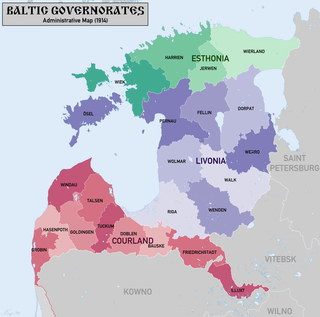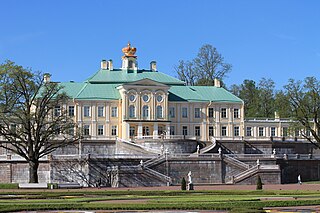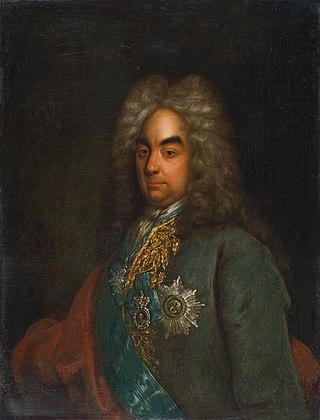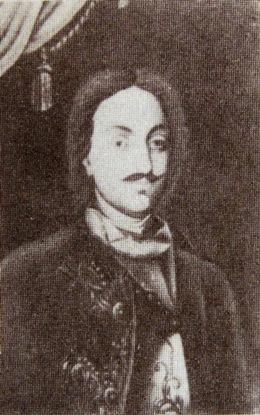| Years in Russia: | 1726 1727 1728 1729 1730 1731 1732 |
| Centuries: | 17th century · 18th century · 19th century |
| Decades: | 1690s 1700s 1710s 1720s 1730s 1740s 1750s |
| Years: | 1726 1727 1728 1729 1730 1731 1732 |

Events from the year 1729 in Russia
| Years in Russia: | 1726 1727 1728 1729 1730 1731 1732 |
| Centuries: | 17th century · 18th century · 19th century |
| Decades: | 1690s 1700s 1710s 1720s 1730s 1740s 1750s |
| Years: | 1726 1727 1728 1729 1730 1731 1732 |

Events from the year 1729 in Russia
| | This section needs expansion. You can help by adding to it. (October 2015) |
| | This section needs expansion. You can help by adding to it. (October 2015) |
| | This section needs expansion. You can help by adding to it. (October 2015) |

Catherine IAlekseevna Mikhailova was the second wife and empress consort of Peter the Great, and empress regnant of Russia from 1725 until her death in 1727.

Peter II Alexeyevich was Emperor of Russia from 1727 until 1730, when he died at the age of 14. He was the only son of Tsarevich Alexei Petrovich and Charlotte Christine of Brunswick-Lüneburg. After Catherine I's death, Alexander Menshikov controlled Peter II, but was thwarted by his opponents and exiled by Peter. Peter was also influenced by favorites like Prince Aleksey Dolgorukov, leading to a neglect of state affairs and the tightening of serfdom. Peter's reign was marked by disengagement, disorder, and indulgence. He was engaged to Ekaterina Dolgorukova, but died suddenly of smallpox before the marriage, thus making him the last male agnatic member of the House of Romanov.

The Order of St. Andrew the Apostle the First-Called is the highest order conferred by both the Russian Imperial Family and by the Russian Federation . Established as the first and highest order of chivalry of the Russian Tsardom and the Russian Empire in 1698, it was removed from the honours system under the USSR before being re-established as the top Russian civil and military order in 1998.

Prince Aleksander Danilovich Menshikov was a Russian statesman, whose official titles included Generalissimo, Prince of the Russian Empire and Duke of Izhora, Prince of the Holy Roman Empire, Duke of Cosel. A highly appreciated associate and friend of Tsar Peter the Great, he was the de facto ruler of Russia from 1725 to 1727.

The Baltic governorates, originally the Ostsee governorates, was a collective name for the administrative units of the Russian Empire set up in the territories of Swedish Estonia, Swedish Livonia (1721) and, afterwards, of the Duchy of Courland and Semigallia (1795).

Oranienbaum is a Russian royal residence, located on the Gulf of Finland west of St. Petersburg. The Palace ensemble and the city centre are UNESCO World Heritage Sites.

Count Pyotr Andreyevich Tolstoy was a Russian statesman and diplomat, prominent during and after the reign of Peter the Great. He was the ancestor of all the Counts Tolstoy, including the novelist Leo Tolstoy and Alexei Tolstoy the writer. His wife was Solomonida Timofeevna Dubrovskaya born 1660 and died 1722; he had two sons with her, Ivan and Peter. Both his sons died in exile with him the year before his own death. He was, however, survived by many grandchildren: the family was recalled by the Empress Elizabeth, daughter of Peter the Great in 1760, and had all honors and land restored.
The Supreme Privy Council of Imperial Russia, founded on 19 February 1726 and operative until 1730, originated as a body of advisors to Empress Catherine I.

The Imperial Order of Saint Alexander Nevsky was an order of chivalry of the Russian Empire first awarded on 1 June [O.S. 21 May] 1725 by Empress Catherine I of Russia.

The Imperial Order of Saint Catherine was an award of Imperial Russia. Instituted on 24 November 1714 by Peter the Great on the occasion of his marriage to Catherine I of Russia. For the majority of the time of Imperial Russia, it was the only award for women; the Insignia of Saint Olga existed briefly from 1916 to 1917, but ceased with the fall of the Romanov dynasty.

The Battle of Rymnik or Rimnik on September 22 (11), 1789, took place in Wallachia, at the Râmnicul Sărat River near Râmnicu Sărat, during the Russo-Turkish War of 1787–1792. The Russian general Alexander Suvorov, acting together with the Habsburg general Prince Josias of Coburg, attacked the main Ottoman army under Grand Vizier Cenaze Hasan Pasha. The result was a crushing Russo-Austrian victory.

Alexander, son of Bakar or Aleksandr Bakarovich Gruzinsky (1726–1791) was a Georgian royal prince. Born in Russia into the Mukhrani branch of the Georgian royal dynasty, Alexander is known for his unsuccessful attempt to reclaim the crown of Georgia from his dynastic relatives ruling Eastern Georgia. At the request of Heraclius II, Alexander was deported back to Russia where he was held in confinement by the Russian authorities until his death. In Russia, Alexander bore the surname of Gruzinsky, meaning "Georgian".

Princess Maria Alexandrovna Menshikova was a daughter of Aleksandr Danilovich Menshikov, the favourite of Peter I of Russia.
Prince Aleksandr Aleksandrovich Menshikov was a son of Prince Menshikov who, at one stage, was betrothed to Grand Duchess Natalya Alexeyevna, a granddaughter of Peter the Great. He later served as an officer in the Russian army.

Events from the year 1730 in Russia